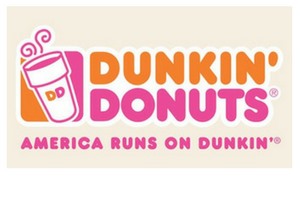How Dunkin Donuts Stays Competitive with Mobile Ordering and Personalized Messaging

Omnichannel isn’t just for fashion, pharma, and groceries – fast food retailers are joining the fray, too. US donut company and coffeehouse chain has been experimenting with one-to-one marketing methods in an effort to branch out from its reliance on traditional advertising and win over business from rival Starbucks.
The strategy has included an embracement of mobile ordering to drive new omnichannel sales and deliver a better experience for its customers – types of initiatives that the brand has not attempted before. Indeed, according to John Schue, Associate Manager of Digital Marketing and Innovation at Dunkin' Brands, it’s a makeover that’s been long overdue.
"Dunkin' has been very strong in traditional mass-market broadcast efforts like on TV and radio for the past decade," he said. “But now we're being challenged in moving to a more personalized one-to-one guest-centered approach as we think about how to engage today's consumer. We had to change our approach."
Mobile Ordering and Curbside Pickup
The change begins with mobile ordering. As of last year, Dunkin’ Donuts customers are able to use the Dunkin’ Donuts mobile app to order coffee, donuts and other food items ahead of time, and then swing by an outlet, grab their snacks and go again. It’s all super convenient, of course, and allows users of the service to speed past those lines in-store and pick up their coffees and muffins. But this mobile-to-store ordering initiative is just the first step of a larger strategy to improve the brand’s online-offline selling capabilities.
Indeed, even more convenience is on the cards. The company plans to test curb-side delivery, which would mean that when customers make online orders for in-store pickup, they wouldn’t even need to leave their cars – Dunkin’ employees simply bring out the goods bagged up and ready to go straight to their vehicles.

(Image source: news.dunkindonuts.com)
In addition, the company already offers delivery options from selected locations using a number of delivery app services. In Brooklyn and Manhattan, NYC, for instance, Dunkin’ offers free delivery for customers via the on-demand restaurant delivery service DoorDash. The service has also been rolled out in other cities such as Boston, Chicago, Dallas and Los Angeles. The aim is to build a robust mobile ordering service that will satisfy customers no matter how they want to place their order, and no matter how they want to get their hands on the goodies.
Overcoming Legacy Systems and Data Silos
It’s clear from the sheer diversity of Dunkin’ Donuts new mobile ordering and delivery options that the company has become aware of how much the modern consumer values experience and convenience. And it’s also an indication that Dunkin’ is aware that it needs to up its omnichannel game if it’s going to remain competitive with Starbucks, which has long been a brand to innovate the customer experience through mobile.
But the road to Dunkin’s new omnichannel services has not been a completely easy one. Like a lot of long-standing companies (Dunkin’ Donuts is now 67 years old) that have relied on traditional marketing methods pretty much for the entirety of their existence, making any sort of meaningful digital shift comes with problems. Outdated technology and data silos are hobbling. Even though the company had built a relatively strong online presence, any customer data it had resided in a variety of different places – on its app, on its website, and widely across social media.
And this is why Dunkin’ sought a solution with Salesforce Marketing Cloud in 2016 so it could finally bring its customer data together in one place, and from there map entry points that customers take on their path to purchase. The partnership has enabled the brand to automate its marketing campaigns, and deliver those one-to-one personalized marketing messages that are so important for modern consumers.
With Marketing Cloud, said Shue, the company can target consumer segments automatically, instead of having to do everything manually as it had to do in the past. "We're no longer constantly pulling lists, evaluating where consumers are in the customer lifecycle and designing campaigns based on these insights," he said. "Now it's all happening within the tool."
Built on Bricks, Growing on Clicks
With Marketing Cloud, Dunkin’ can now send over 700 million personalized email messages to customers, and, using the Social Studio feature of the service, can also monitor and participate in conversations about the brand on social. This is vital for a company that has built up 13 million-strong fan-base on Facebook alone. As John Costello, President, Global Marketing and Innovation, explains, “Being social is not just about winning fans and influencing followers. It’s about sharing content that inspires our customers (and their friends), and giving them the opportunity to engage with us.”
For a traditional brand trying to stay competitive in a modern, digital world, Dunkin’ Donuts is certainly proving that it’s not shy to experiment with up-to-date technologies, and work to overcome obstacles that legacy systems put in place. And from mobile-ordering to curb-side pickup, and from personalized emails to social media engagement, Dunkin’ Donuts is showing that its latest strategies are not simply survivalist, but an aggressive move forward as it embraces new ways to retain existing customers and attract brand new ones. The last word goes to Scott Hudler, SVP and Chief Digital Officer, Dunkin' Brands.
"The demands of customers today are greater than they've ever been due to the wealth of information and access right at their fingertips, and if Dunkin' isn't delivering on those expectations, our customers will go somewhere else that will. The Dunkin' brand was built on brick and mortar locations, but now, we have evolved our engagement strategy to make the customer experience even better, across physical stores and digital channels."